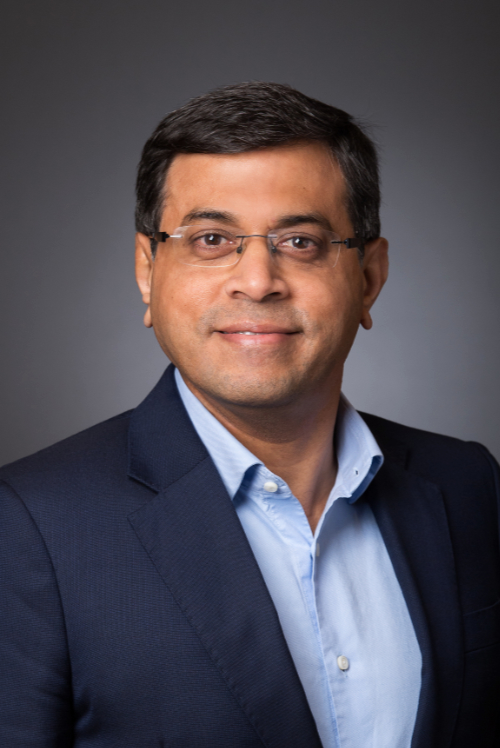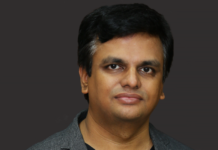While the global chip shortage is now in its second year, analysts forecast that its end is nigh. JP Morgan Research, for instance, says more chips will become available in the second half of 2022. Meanwhile, Deloitte predicts that by the end of 2022, the lead times for semiconductors will be relatively shorter and that the industry will be “in balance” by early 2023.
One of the organisations working towards this goal is filtration solutions maker Pall Corporation, which is building a US$100 manufacturing facility in Singapore, and is seeking to boost the semiconductor industry in Asia-Pacific.
To find out more about the massive project, Frontier Enterprise recently spoke to Naresh Narasimhan, President of Pall Corporation. We also asked him about Pall’s Singapore expansion plans, the technologies they’ll make in the facility, and the long-term trends in the semiconductor industry, among others.
What do you think are the main challenges when it comes to the semiconductor manufacturing processes?
The main challenges would be in ensuring that the manufacturing process is contaminant-free.
Mega trends such as the accelerating technology adoption for “smart” devices — which use artificial intelligence — and the rise of electric vehicles are creating an exponential growth of demand for high-performing semiconductor chips. As the demand for 5G, AI, and IoT devices continue to grow, so will the need for more advanced chips with increased performance and energy efficiency. These, in turn, require sophisticated filtration and purification solutions to produce.

As chip designs continue to evolve, advanced nodes shrink and come in sizes and geometrics that are more complex. The manufacturing processes to produce chips becomes more complicated and sensitive to potential contamination. The raw materials used to manufacture these chips must have the highest level of purity to reduce defects, especially in applications such as medical devices and automotive (parts), where latent defects can be quite costly.
There are impurities in each step of the process, which can result in more chemical usage, costly downtime, and significant reduction in yield. This means that advanced node semiconductor manufacturing requires extremely clean fluid streams, driving greater need for high-end filtration and purification solutions. These are solutions that Pall provides.
What distinguishes Singapore as one of the most globally competitive and innovative semiconductor/manufacturing clusters?
Singapore has a rich ecosystem of leading materials and equipment, and electronics manufacturing services players — allowing Pall to be a part of the global supply chain for products ranging from storage and memory products, to microelectromechanical systems.
With our investment in Singapore, Pall is uniquely positioned in the Asia-Pacific region to offer substantial expertise and a vast footprint of technologies to serve the growing demands of semiconductor manufacturers.
In a highly specialised microelectronics field that requires science and innovation, we need the right set of talent, such as those with advanced degrees in science, manufacturing, and engineering to perform functional and specialised roles. Singapore provides us with access to the right talent pool, supporting our business growth ambitions.
What are Pall Corporation’s growth and expansion plans in Singapore?
Singapore is the global headquarters for Pall Corporation’s microelectronics business unit. Since establishing our presence in Singapore in 1984, we have grown our footprint here, employing 117 associates across our two sites.
On August 30, 2022, Pall broke ground on our new US$100 million manufacturing facility in Singapore, which will more than double our current production capacity to help support the growing semiconductor demand in Asia-Pacific. The new site will create more than 300 jobs in science, engineering, and manufacturing. We expect to continue to invest and expand in Singapore as it remains a key regional hub for our customers in APAC.
Could you provide us with an overview of the latest technologies to be shaped from the solutions that this new facility provides?
First off, Pall does not manufacture semiconductor chips. Pall is part of the value chain and plays a crucial role in ensuring that semiconductor chips are manufactured at high standards and quality. Specifically, we produce lithography and wet-etch filtration, purification, and separation solutions that will help meet the demand for advanced node chips.
As mentioned earlier, the manufacturing processes to produce chips are becoming increasingly more complex. The raw materials used to manufacture these chips must have the highest level of purity to reduce defects, especially in applications such as medical and automotive devices, where latent defects can be quite costly. Pall’s solutions ensure that the chips produced using our filtration technology and solutions are of the highest purity.
In your opinion, what are the trends that will shape the semiconductor industry for the next 5 to 10 years?
There are a few key trends that we see will shape the semiconductor industry, in terms of the increasing demand for smart devices; need for sustainable production methods; importance in cultivating a talent pool; and growth in APAC’s semiconductor market share.
Firstly, we are likely going to see an acceleration of technological progress. The foundations for connectivity and automation have already begun with the building of 5G networks and IoT. As 5G networks become more reliable and widespread, high stakes applications for IoT technology have become increasingly central across healthcare, manufacturing, and automotive industries, among others, driving an urgent need for advanced semiconductors. Electric vehicles, for instance, use anywhere from two to three times the number of microchips a regular combustion engine vehicle.
As (the) demand for semiconductors continues to grow due to emerging technologies, semiconductor production would need to increase (as well). This would cause a massive surge in energy consumption and water usage.
We expect APAC to have an increased market share in the global semiconductor industry, with the global market of semiconductors to exceed US$1 trillion by 2030. This growth demand for semiconductors in APAC necessitates strategies that will bring us closer to Asia (as a whole).
This means setting up infrastructure in Asia, including talent development in this highly niche and specialised field. There is an increasing importance in cultivating a talent pool with a shortage of talent in the semiconductor industry. Singapore has a talent pool with skilled workers who have highly advanced degrees. Pall aims to hire more than 300 employees with science, engineering, and manufacturing experience, as well as including training to develop new talent and enable the transfer of knowledge.















